Aardonyx Guide:
Aardonyx was an early dinosaur that lived in South Africa about 200 million years ago.
Aardonyx was an early dinosaur that lived in South Africa about 200 million years ago.
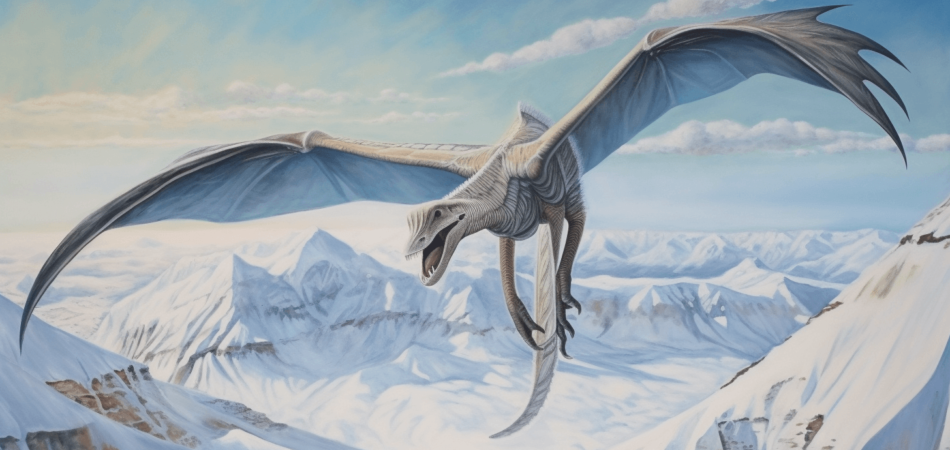
Pterosaurs, often mistakenly called “pterodactyls,” were the first vertebrates to take to the skies. These flying reptiles ruled the Mesozoic Era, spanning from the Late Triassic to the Late Cretaceous period. In this article, we will explore the fascinating world of pterosaurs, from their unique anatomy to their diverse lifestyles.
Pterosaur wings were made of a thin, flexible membrane that stretched between their elongated fourth finger and hind limbs. The wing bones were lightweight and strong, allowing for powered flight. Pterosaurs had a unique combination of hind legs and wing membrane, which differentiated them from other flying animals.
Most pterosaur skulls were lightweight and had large, hollow spaces. Some toothed species had sharp, needle-like teeth for catching fish and small vertebrates, while others had no teeth at all. Some pterosaurs also sported elaborate head crests, which were likely used for display purposes.
The hind limbs of pterosaurs were generally strong and well-muscled, with some species having long fifth toes. Early pterosaurs had long tails, which may have been used for stabilization during flight. Later pterosaurs had reduced tail lengths, possibly to aid in maneuverability.
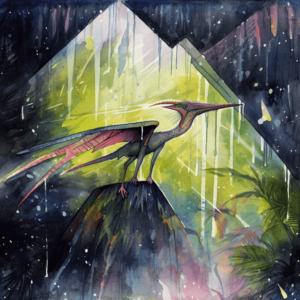
The earliest pterosaurs, such as Eudimorphodon, appeared in the Late Triassic period. Early pterosaurs were small, with long tails and modest wingspans. They likely fed on insects and small vertebrates.
As time went on, pterosaurs diversified into a wide range of forms. Some, like Pterodactylus and Pteranodon, were large and had huge wingspans, while others remained small. The largest pterosaurs, such as Quetzalcoatlus, had wingspans of up to 36 feet, rivaling some small airplanes.
Pterosaurs became extinct at the end of the Cretaceous period, around 66 million years ago, along with the dinosaurs. The exact cause of their extinction is still debated, but it is likely that a combination of factors, such as climate change and the rise of birds, contributed to their demise.
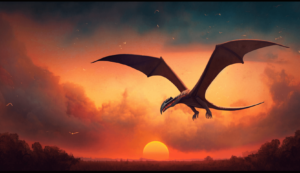
The diet of pterosaurs varied depending on their size and tooth structure. Toothed species likely preyed on fish and small vertebrates, while toothless pterosaurs may have eaten a wider variety of food, including fruits and seeds.
Pterosaurs were capable of powered flight, using their strong flight muscles to flap their wings and generate lift. They also had large brains, which may have helped them navigate and find food. Some species were likely soaring specialists, while others were more agile and maneuverable.
Pterosaurs were also capable of moving around on land. Early pterosaurs were probably more terrestrial, while later pterosaurs likely spent more time in the air. Some pterosaurs, such as Hatzegopteryx, may have been primarily ground-dwelling, using their powerful hind limbs to hunt prey.
The pterosaur fossil record is relatively sparse, with most pterosaur fossils being fragmentary or incomplete. This is due to the delicate nature of pterosaur bones, which are easily crushed or damaged during the fossilization process. However , some well-preserved pterosaur specimens have been found, giving us a glimpse into their lives and anatomy.
Pterosaur fossils have been found on every continent, indicating that they were widespread during the Mesozoic Era. Some of the most famous pterosaur fossils come from Germany’s Solnhofen Limestone, which has preserved a variety of early pterosaurs, such as Pterodactylus and Rhamphorhynchus.
In the twentieth century, pterosaur fossils were often discovered alongside dinosaur remains. This has led to a better understanding of the diversity and evolution of these flying reptiles. More recent discoveries have revealed pterosaurs with feather-like structures, suggesting that they may have been closely related to feathered dinosaurs.

Although pterosaurs were the first flying vertebrates, they were not the ancestors of modern birds. Birds and pterosaurs shared a common ancestor but evolved flight independently. Pterosaurs had a different wing structure and flight style compared to birds, which allowed them to fill different ecological niches.
Pterosaurs were also distinct from bats, another group of flying animals. While both pterosaurs and bats have membranous wings, the wing structure and bone arrangement differ significantly between the two groups. Bats have elongated fingers supporting the wing membrane, while pterosaurs had a single, elongated fourth finger.
Pterosaurs can be divided into two main groups: the early, long-tailed “rhamphorhynchoids” and the later, short-tailed “pterodactyloids.” These groups are further divided into several families and genera, each with their own unique characteristics and adaptations.
Throughout the Mesozoic Era, pterosaurs evolved into a wide variety of forms. Some species had toothed jaws for catching fish, while others were toothless and may have fed on fruits, seeds, or small invertebrates. Many pterosaurs had bony crests on their heads, which could have been used for display or to help stabilize the skull during flight.
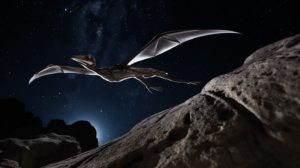
While little is known about the social behavior of pterosaurs, some fossil sites show evidence of pterosaurs living in groups or colonies. This suggests that they may have been social animals, engaging in communal nesting, feeding, or other cooperative behaviors.
Pterosaurs were both predators and prey in their ecosystems. They fed on a wide variety of organisms, including fish, small vertebrates, and invertebrates. However, they were not at the top of the food chain, and large predators such as the Tyrannosaurus rex likely preyed on them.
In addition to their flight capabilities, pterosaurs were also able to move on the ground. Some species, like the terrestrial Hatzegopteryx, were well-adapted for a ground-dwelling lifestyle. Others, such as Pteranodon, likely spent most of their time in the air and would have been less adept at terrestrial locomotion.
Pterosaurs have long captured the imaginations of people, appearing in various forms of media and popular culture. From their depiction in early twentieth-century artwork to their roles in movies like “Jurassic Park” and “Avatar,” these flying monsters continue to captivate audiences around the world.
Many misconceptions about pterosaurs persist in popular culture. For example, the term “pterodactyl” is often used to refer to all pterosaurs, when in fact, it refers specifically to the genus Pterodactylus. Additionally, pterosaurs are often portrayed as scaly, lizard-like creatures, when recent fossil evidence suggests that they may have been covered in hair-like structures or even feathers.
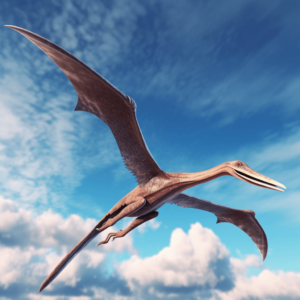
The study of pterosaurs has advanced significantly over the past few decades, with new fossils and technologies providing fresh insights into their anatomy, behavior, and evolution.
New discoveries, such as the rich pterosaur fossil beds in China, have led to a better understanding of pterosaur diversity and the relationships between different species. Advanced imaging techniques, like CT scans and 3D modeling, have also allowed paleontologists to study pterosaur fossils in greater detail than ever before.
There is still much to learn about the world of pterosaurs. Ongoing research aims to answer questions about their ecology, behavior, and extinction. As new fossils are discovered and new technologies are developed, our understanding of these enigmatic creatures will continue to grow.
Pterosaurs occupied a variety of ecological niches throughout the Mesozoic Era. Different species were adapted for different types of environments, diets, and hunting strategies. This allowed pterosaurs to coexist with other flying animals, such as birds and insects, without directly competing for resources.
Some of the largest pterosaurs, like Quetzalcoatlus, were apex predators in their ecosystems, preying on a variety of terrestrial and aquatic animals. Their huge wingspans and powerful flight muscles allowed them to cover large distances in search of prey.
Many pterosaurs were closely associated with marine environments, where they likely hunted for fish and other aquatic prey. Fossil evidence of pterosaurs diving or swimming has not been found, but it is possible that they used their powerful wings to skim the water’s surface or plunge into the water to catch their prey.
Although pterosaur eggs are extremely rare in the fossil record, recent discoveries have provided valuable insights into their reproductive biology. Pterosaur eggs were soft and leathery, similar to those of modern reptiles. Some fossil sites also show evidence of pterosaur nesting grounds, suggesting that they may have engaged in communal nesting behaviors.
The growth and development of pterosaurs are not well understood, but some fossils show evidence of rapid growth rates in juveniles. This would have allowed young pterosaurs to quickly reach adult size and take to the skies, reducing their vulnerability to predation.
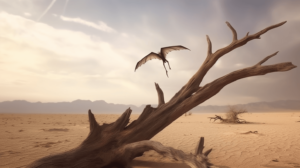
Pterosaurs went extinct at the end of the Cretaceous Period, around 66 million years ago, along with the dinosaurs and many other groups of organisms. The cause of this mass extinction event is widely believed to be a combination of factors, including an asteroid impact and volcanic activity.
The K-Pg extinction event had a profound impact on global ecosystems, with many species going extinct and others undergoing significant changes. Pterosaurs, as highly specialized flying animals, were likely unable to adapt to the rapidly changing environment, leading to their eventual extinction.
Although pterosaurs are no longer present in our modern world, their legacy lives on in the form of the many flying animals that have evolved since their extinction. Birds, bats, and insects have all filled the niches left vacant by pterosaurs, continuing the story of life in the skies.
Pterosaurs were a diverse group of flying reptiles that ruled the skies during the Mesozoic Era. Their unique adaptations for flight, varied ecological niches, and fascinating biology set them apart from other flying animals. Though they went extinct alongside the dinosaurs, their impressive legacy lives on through the fossil record and the continued study of their remarkable lives.
Pterosaurs were flying reptiles that lived during the same time as dinosaurs but are not considered dinosaurs themselves. They were closely related to dinosaurs but belonged to a separate group of reptiles called the Pterosauria. Pterosaurs were diverse in size and shape, ranging from small, sparrow-sized creatures to large species with wingspans that rivaled modern airplanes. These remarkable animals adapted to a variety of ecological niches, which allowed them to thrive alongside the dinosaurs. In a dinosaurs tv show overview, audiences can explore the fascinating world of these flying reptiles and learn about their unique adaptations and behaviors, illustrating how they contributed to the prehistoric ecosystem.
The largest pterosaur was Quetzalcoatlus, with an estimated wingspan of up to 36 feet (11 meters). This giant pterosaur was an apex predator in its ecosystem, preying on a variety of terrestrial and aquatic animals.
Recent fossil discoveries in China have revealed that some pterosaurs had hair-like structures or even feather-like structures on their bodies. This suggests that they may have been closely related to feathered dinosaurs and that the origin of feathers predates the emergence of birds.
Pterosaurs had a unique wing structure, with a single elongated fourth finger supporting a membranous wing. Their powerful flight muscles and lightweight bodies allowed them to achieve powered flight, similar to modern birds and bats.
Pterosaurs went extinct at the end of the Cretaceous Period, around 66 million years ago, along with the dinosaurs and many other groups of organisms. The cause of this mass extinction event is widely believed to be a combination of factors, including an asteroid impact and volcanic activity.